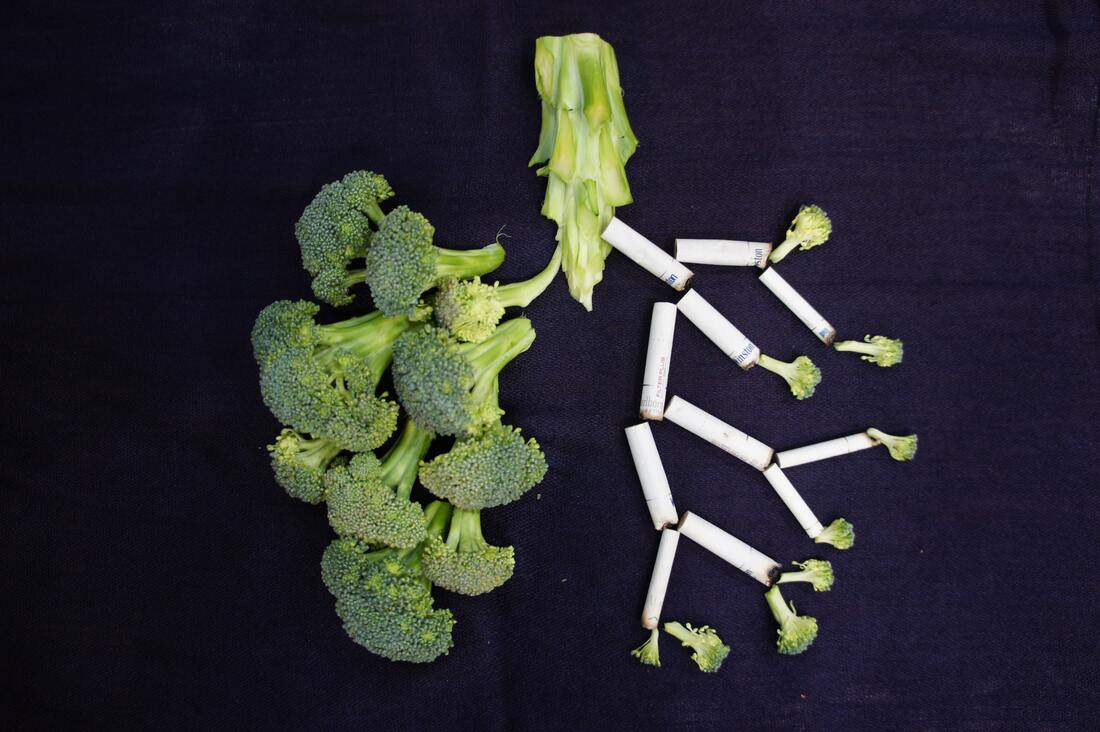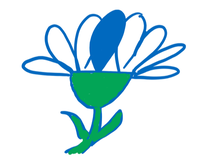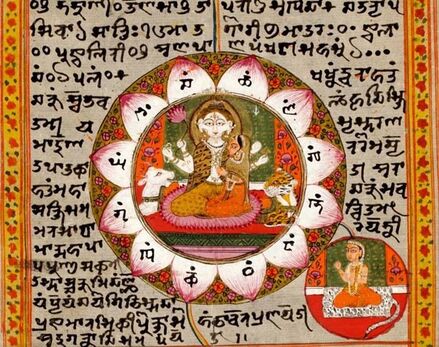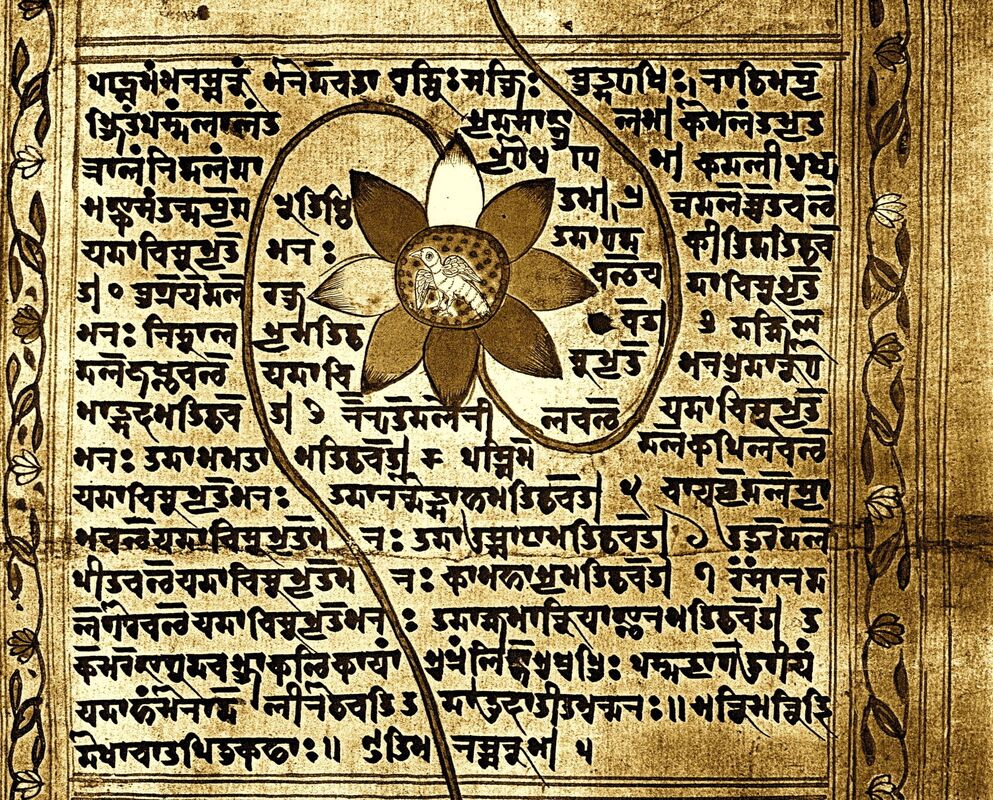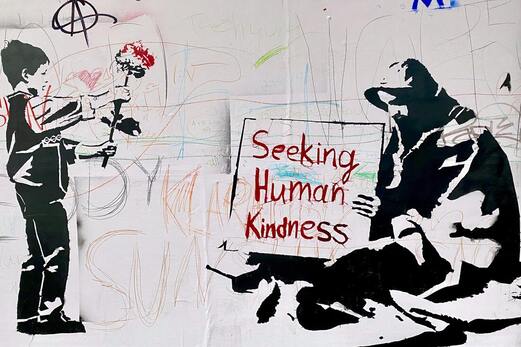|
OnthedaysthatIamreallybusyandrunaroundalotusuallycaringforothersandnotpayingattentiontomyownneedsitendtofeelfrazzledandtiredanditsexhaustingandoverwhelminganditshardtomakesenseofthings…. 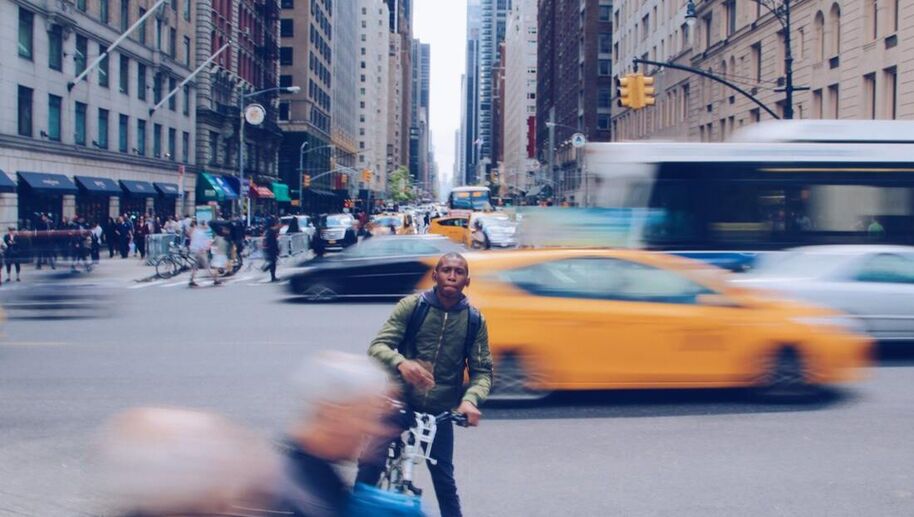 Photo by Al Elmes on Unsplash Photo by Al Elmes on Unsplash Did that sentence hurt your eyes? Your brain? Was it hard to make sense of it? Did you not bother? That’s what life is like without pauses. Its hard. It often is overwhelming, tiring. We know that pauses are helpful. We have pauses in between words. We have punctuation to help us make sense of what we read. We instinctively know that we should take a breath before speaking at times. We have breaks at work for morning or afternoon tea for a brain and body break. We love taking holidays to get away from our regular routines to reset and get out of our regular patterns…… Pauses are really, really helpful. I love using pauses in my yoga practice for the same reasons. Its good for my brain and my nervous system. I use pauses in a number of ways.... Pauses between movements are like the pauses between words. It can help our body differentiate different movements and to orient ourselves. It increases our interoception – that ability to feel inside our bodies. Interoception uses the pathway of the vagus nerve, as well as other neural pathways to relay signals from the body to brain regions including the brain stem, thalamus, insular cortex, somatosensory cortices, and anterior cingulate cortices. The purpose of interoception is to create and maintain homeodynamic balance in the system. When we have greater interoceptive awareness, we also then have a greater sense of self – and this means we can also understand our needs, desires and ultimately a greater sense of identity, meaning and purpose. Poorly developed Interoceptive awareness has been shown to be associated with a range of challenges to our mental health including; anxiety, depression, anorexia, bulimia, PTSD, OCS, chronic pain, negative emotions, poor emotional regulation, poor decision making and addiction. Pausing during an asana practice as my teacher often says is an important as the pose. We can allow the physical sensations of the body, especially if we have practised an asymmetrical movement to bubble up and be noticed. In addition to pauses between movement, I also use pauses between breaths in my yoga practice. Breath pauses are not the same as holding the breath. Pauses should feel easeful, my teacher describes them like that moment when you are shaking a sheet in the air and it lingers before floating back down again – that kind of pause. Pausing at different phases of the breath can produce different results. Pausing at the end of the inhale can increase our energy and alertness. Pausing at the end of the exhale can increase our parasympathetic nervous system response and increase feelings of relaxation, calm and safety. Pauses are also useful in life. I usually pause my teaching practices in school holidays – so I can spend time with my children, but also so I can reset and plan. Next week Thursday September 23 is the last week of classes for this term. I will then be pausing for a few weeks from my work and yoga teaching. I’m going away to the Flinders ranges with a friend, and then celebrating my twins 18th birthday - pausing to celebrate life, friendship, milestones. Yoga will return for term 4 on Thursday October 14. The evening term will be a 6 week term only – and then I intend to give myself a longer pause before I work out what and if I will teach in 2022. The 6 week term will be $75. Casual attendance will return to $17 (there has been a special this term of $13 due to the lockdown possibilities). In the event of a term 4 lockdown the classes will go online, or onto my deck at home if possible. I hope you can find a moment to enjoy a pause in your day. xx
2 Comments
Breathing is such an important part of life – so important that we normally allow it go on in the background, unnoticed. Developing an awareness of how our body breathes enables us to move with greater ease increases our capacity for mindful living and can support health and wellbeing.
Breathing is also an incredibly important part of yoga practice, and is one of the 8 limbs of yoga. Breath is intimately linked to what yogis call Prana – this is the life force that surrounds us. Breathing is one of the ways that we can replenish our own life force – we can literally breathe in more vitality and breath our staleness. We know breathing can impact the autonomous nervous system – the way we breathe can create more energy and alertness, and can also can create a sense of calm and relaxation. The yoga tradition includes a range of breathing exercises called pranayama to balance the energies (prana) of the body. Some of these techniques can help us develop a better clarity and focus, enhance lung capacity, cleanse the respiratory system and support us to sleep better. Pranayama are therefore specific tools that can have different impact on the body/mind. Think of them like asanas – they are things we can learn, practice and integrate into our lives. And just like asana practice, there are principles that are useful to remember when learning these techniques, or bringing breath into more conscious awareness during our yoga practice. Here is a summary of my key principles of using breath in yoga: Use the nose to breathe as much as possible The nose is an amazing structure. It has hairs which filter the air we breathe and is therefore the first line of defense for the immune system. Breathing through the nose can also stimulate the olfactory nerves, and these can directly lead to some memory centres of the brain. When we are practicing our yoga asana, inhaling and exhaling through the nose also helps to slow the breath down, which helps balance the parasympathetic and the sympathetic nervous systems. There are some particular pranayama that use the mouth for exhaling – otherwise the nose is recommended as much as possible. Allow the breath to steady first It is important to remember that just like our body can develop habits that are helpful and habits that are unhelpful, our breathing can be similar. Often many people I speak to about breathing have developed a pattern of unintentional breath holding. Often we hold the breath when we are worried, tense on edge, or as a result of trauma. We can also breathe with just the upper lobes of the lungs, or breathe regularly through the mouth. None of these are necessarily wrong, but there ay be more helpful patterns. Before we manipulate the breath with new pranayama techniques, it is useful to observe the breath first. It is also not helpful to change the breath too much too quickly, so we want to go slowly and steadily with learning any new breathing techniques. One of the benefits of breathing is that it regulates the sympathetic and parasympathetic nervous system - Often the breath will find its own rhythm that is slow and easeful while we watch – then we can start trialing different ways of breathing so we can notice the effects on our own system. Don’t push the breath. Aim to slowly develop awareness and use different breathing techniques and notice the effects on you. People respond differently to different techniques – like learning asana and movement practices, it is an opportunity for self exploration and greater understanding of our systems. Just like in asana, I find that the slow steady mindful approach means that I can move within my capacity – some days I may be able to do a stronger practice, and other days I need something more restorative. Breathing is the same – we can build up our tolerance of stronger breathing techniques slowly, but there still may be days, such as while menstruating or experiencing grief, anxiety or pain that these practices aren’t right for us. Not all breathing practices are right for all people. Some particular contraindications may be heart conditions, asthma, bronchitis or respiratory issues, but also anxiety and dissociative conditions. Let the breath move you. When we move mindfully, it can be useful to allow the breath to initiate the movement. Sometimes this might be following the intuitive movement of the breath and allowing the breath to be completely free, and other times it may be using a deliberate breathing ratio or technique within the movement of the body. It can be useful to know that inhales are generally expansive and will support movement where we open up, think lifting arms, backbends. Exhales are generally contracting and are often used when folding forward, or moving into twists. When you become more subtly tuned to the breath you will notice that the movement happens within the breath. That you start to breath, then you start to move, and you finish moving and then you finish breathing. And then you pause in stillness. Ratios are important Much of our experimenting with breath can be done through changing the ratios of breathing. Any even breath ratio will be 1:1 (ie 4 counts in 4 counts out). At times we can change the ratio, and build up the inhale and the exhale. It is useful to remember that while we can extend the exhalation to up to double the length of the inhalation, the inhalation should always be less than the exhale – this is because it could cause both physical and psychological destablisation. Play with pauses. Breath pauses can help calm the nervous system, (after an exhalation) or create more alertness to the system(after an inhalation). My teacher often says that the pauses are where the magic happens – pauses in movement give our nervous system a chance to notice interoceptively how we fell in the body, and pausing the breath also helps to slow our breathing down and creates more mindful awareness. Pausing the breath is not the same as holding the breath. Pauses should feel natural and comfortable, and should not leave us gasping or hungry for air in the following breath. In Term 3 we are turning our attention towards mindful breathing. Each week we will explore different pranayama technique and will explore the principles outlined here and find ways to breath that support resilience of the system – that is the capacity to respond to stressors and return to a state of balance. Breathing is an impart part of developing resilience. Feel free to join me: Thursday July 22- September 23 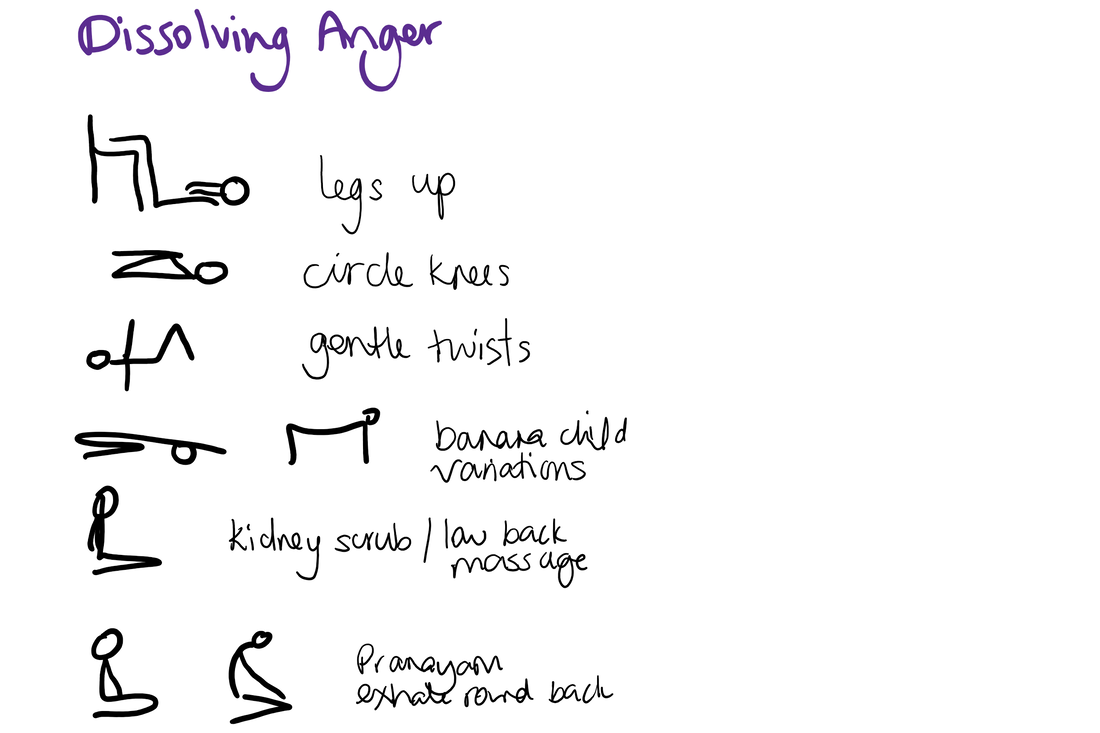 This term we are using the Manas Chakra as our guide for exploration, a little-known chakra which has 8 multicoloured petals, pointing to different points on the compass. See earlier posts for more information about this fascinating chakra and the ancient texts where it is described. This week we are focusing on the petal which points to the south. The universal mother text tells us “when attention comes to rest in the black southern petal then thought breaks up your anger.” It is important to understand that the usage of chakras was largely as visualization tools, as an aid to contemplative meditation practices. It is also important to understand that the chakras were thought to be threaded like flowers onto the central energetic stem of the body (in front of the spine), and therefore we should visualize them as three dimensional in the body, pointing front, back and to the sides, rather than 2 dimensional (which is how they are often drawn) with the petals just pointing up and down. The information on this chakra starts at the East. This makes sense as we know that in traditional yoga practice of the time, practices were done in the early morning facing the rising sun- to the east. Therefore, the Eastern petal is towards the front of the body and the western petal points behind. The Southern Petal then, by logic points to the right of the body. Why is this important? Well at about the level of this chakra, which is above the navel and under the diaphragm sits the liver…. The liver is a large organ and is important in digesting food and eliminating toxins from the body. In Traditional Chinese Medicine the liver is thought to be associated with anger, resentment, frustration, irritability, bitterness, and flying off the handle in rage. I find the co-incidence of this text pointing us directly towards the liver to dissolver anger interesting. It makes sense as we also remember that there was no distinction between the body and the mind. So how can yoga help dissolve anger? We start by listening to the wisdom of this text to bring our awareness to it. Once we are aware of something then we are able to allow it to soften and flow. Often emotions become stagnant when we avoid them or ignore them. Yoga by its nature helps us to be more intentional with where we place our attention. Once we can recognize anger, then we can soften, soothe and allow it to move through us. Turning towards ourselves with compassion, using massage on the liver and kidney area can be helpful to this. Gentle twists can also massage the connective tissues around the organs as can using the breath, especially longer exhale breaths. I've drawn a bit of a short sequence you can try to bring gentle awareness to the liver when angry- I'll explain these more in classes, especially the banana child pose! 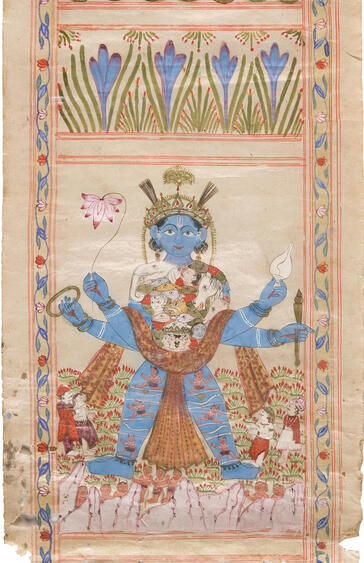 A SCROLL OF MEDITATIVE CHAKRAS RAJASTHAN, 18TH/19TH CENTURY Opaque watercolor, gold, and ink on paper. 103 x 8 1/2 in. (262 x 21.6 cm) A SCROLL OF MEDITATIVE CHAKRAS RAJASTHAN, 18TH/19TH CENTURY Opaque watercolor, gold, and ink on paper. 103 x 8 1/2 in. (262 x 21.6 cm) Today on Mothers day, I am revisiting and reflecting on my studies from a few years ago on the Universal mother. This teaching is a translation of an amazing tantric scroll, which dates to about 1000 years ago, translated by Sanskrit scholar Chris Tompkins in 2014. The scroll depicts a beautiful 12 chakra system, as well as teachings for embodying the Universal mother. I had the pleasure of seeing a variation of this scroll, and other similar artwork, when it toured Australia in 2009 as part of the Goddess- divine energy art exhibition. It was truly a remarkable piece of art and history that I am so pleased I got to see with my own eyes – it was just under 4 metre long and beautifully detailed. In my reflections today am reminded that mother is first and foremost an energy, not a person. All of us embody the qualities of mother at varies times as it is the universal energy of life. Many of us mentor, support, nurture and inspire each other, all qualities of mother energy. We also all contain desire for love and intimacy, also associated with mother energy. The Jagd Matr text poetically describes the chakras as a garland of lotuses strung on the central stem of the sushumna nadi (the central energy channel of the body). The soul is described like a bee, that resides in the top most chakra, and is encouraged through the practices described in the text to visit all the chakras, collect the nectar from each and then settle down in the chakra of the heart as the humsa (or unification of the in breath and the exhale breath in the heart space). The Universal Mother in this chakra scroll is understood to be the ground of being, the highest reality that contains the whole of the Universe in her very being. The scroll lists 50 “little mothers” which are the divinities of each petal of the 6 main chakras. The goddesses are represented by all the letters of the Sanskrit alphabet. The practices described in the text were previously lost (or not shared widely) and are based on mantra (sound vibration), pranayama (breathing practices) and meditation. Asana is understood to be the throne on which we sit to do the practices, and the practices were undertaken by householders who were likely to have been initiated, but not living away from their family and daily responsibilities. The recent translation of this scroll challenges some previously assumed knowledge of these practices, and gives us a different seed syllable sound for each chakra, as well as different deities than in other chakra writings from the last 100 years made popular by the Theosophical society. The text interestingly uses the term yoginam to refer to both male and female practitioners, in contrast to the later dated scrolls which only use the masculine term yogi, highlighting the feminist nature of the entire scroll, and the importance of the energy of mother to everyone. If you are curious about this chakra system and some of the practices it describes, I will be sharing some that I use from this at the Winter Solstice Kind-fulness retreat. 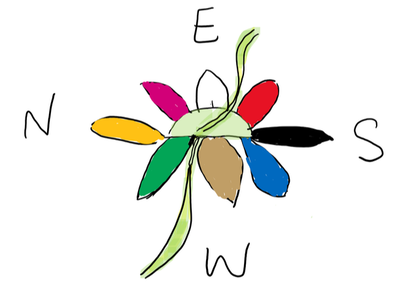 The different colours of the petals and their direction can be seen here. Drawn by myself. My more talented artistic children are old enough to not be interested in drawing things for me anymore- be kind, I am learning! The different colours of the petals and their direction can be seen here. Drawn by myself. My more talented artistic children are old enough to not be interested in drawing things for me anymore- be kind, I am learning! I have spent this period of limited teaching to reflect more on my practice – what do I want to gain from my practice, how does it need to change, adapt and grow. I have found myself coming back to a text I first studied in 2014, to understand my own mind, and to help me sit with significant changes in my body at this time. I have been studying tantric yoga over the last decade with a range of teachers. The text I have recently revisited is a translation by Sanskrit scholar Christopher Tompkins who translated the Kubjikopaniṣad (‘Secret Teachings of the Kubjikā Tantra’), and the ‘Universal Mother’ (Jagad Mātṛ) Chakra Scroll . These texts are from Kashmir and date around the 11th century. This Universal Mother text describes a system of 12 chakras (the chakra system we are most familiar with in the West comes from one particular text and shows 7 chakras. In classes we have previously also explored a 5 chakra system- see previous blog posts on chakras here) Chakra systems were chosen for practice depending on what you wanted to use them for. Chakras are both thought to be “real” as they represent energy locations in the body, as well as metaphors, and are predominately tools for meditative practice. In the Jagad Mātṛ, the 12 chakra system here represents the journey of the soul visualized as a bee, who is invited to visit the 50 petals of the various chakras in this system to gather the nectar and wisdom from all of our embodied human experience. The Chakras as visualized as threaded onto the central channel of the body. (Sushumna Nadi). Each petal represents its own quality, or little goddess. The 5th Chakra in this 12 chakra system is the Manas chakra. Physically located in the body 10 fingers above the navel, which is often the base of the ribs. I have been fascinated with this chakra since studying this text in 2014 and have decided to focus just on this one chakra for term two. (yes, it has taken me 7 years to sit with the wisdom of this chakra to feel confident enough to explore it in my teaching!) The term Manas chakra means “Centre of the mind”. The ancient yogis did not distinguish a separate body and mind, instead they understood us to have one body-mind. The manas chakra is the location for this body mind. It was described as our divinity mind – where our awareness is expanded into our full potential. And to reach our full potential, we need an understanding of how our thoughts and emotions influence our behaviour, and how we can chose to be with different thoughts and emotions. There are 8 petals of this chakra and they are all of a different colour. (Each chakra has its own colour scheme in this system-(let go of the idea of chakras being rainbows!). Each petal also has its own direction of the compass. Chakras are visualized and/or felt as spinning vortexes along our central channel. Because we usually see the chakras depicted visually and therefore outside of ourselves, we often imagine a centre in front of us, with petals reaching around, up and down, like we are drawing it on a flat piece of paper. In this system we are encouraged to experience the centre of the chakra along the stem of our central channel, like it has been pierced- with the petals expanding from this centre three dimensionally into our body – towards the front, back and sides of the body. The petals, like any flower can open or close. In the centre of this Manas chakra lives a fire swan called the Hamsa. (not drawn in my diagram! ) This swan can travel to each of the petals and use the energy of the petal (or its opposite) to help transform our thinking, and help us to achieve our expanded state of being. The Manas chakra acknowledges that we have many styles of thinking and emoting. The mind was thought of as an ocean and thoughts like its many waves. The early yogis were the first to encourage us to surf our thoughts and emotions and feelings, to encourage us to understand and not identify with the many different states of mind that come and go. We are encouraged to “behold” or accept and not suppress our thoughts, knowing that they will subside with time. The 8 petals are conceptualized as: East – translucent white – Virtuous – a reminder that we need discipline, and remembering of our innate goodness. When we are stuck here we often get caught in perfectionism and harsh self judgements. Southeast – red- Sleepiness- a reminder that we need to rest, that sometimes our minds become dull. When we get stuck here we are not able to think critically, and live like in a dream like state. Southern – Black – Anger- an acceptance of our dark thoughts – towards others and ourselves. If we are here without awareness we can become cruel, malicious, hurtful, and if we are here with awareness we can let anger flow and dissolve and be useful energy for change. Southwest – Blue – Benevolence or impartiality – a way of transforming selfishness into an awareness of the suffering of others. Being stuck here may lead to aloofness or uncaring. West – Brown – Fiery Bliss/Joy- those moments of awe, wonder and ecstasy. We know when we get tuck here as we chase moments of pleasure, often through things we become addicted too - social media, alcohol hard work outs etc. Northwestern – Green- Thoughts as light rays – this is a reminder that we can transform moments of overwhelm into clarity and be literally inspired by the light. When we are here without awareness we are often over thinking, overwhelmed and not clear on what we need. Northern – Yellow- Comical – A reminder that play is important and we can use humour, laughter and fun to transform our thoughts and emotions. When we get stuck here we don't take anything seriously. Northwestern – Maroon – Creativity and insight. This is the petal where new ideas spring from. Its opposite is default mode- being stuck in habitual modes of thinking, feeling and acting and not being in the moment. An awareness and exploration of this chakra and its eight petals gives us tools and insights into our body/mind. On what petal do we habitually spend time? What petals are hard for us to notice? Can we deliberately move our awareness to a particular petal to create a mood, or to move us when we are stuck, or to encourage acceptance of how we are? It is important to remember that we were seen as being born self actualized – this is something that we need to uncover or remember (not create or develop!) and that all of our human experiences, including, suffering, anger are valid experiences, and that we will need to visit these petals at times – and this is ok. In this coming 8 week term, we are applying the technique of “kindfulness”- approaching our body and mind with a kind awareness to explore each of these petals, using asana, breath, meditation and relaxation and mantra techniques. In the Winter Solstice half day retreat we will lean into the darkness of this period and explore the 12 chakra system of the Universal mother as a way of integrating all aspects of ourselves. We will hopefully be using the labyrinth as well as some special chakra meditations to be with the 50 petal goddesses that live within. Yoga, as I am sure you all know by now is translated as unity, connection, oneness. It invites us not only to connect with ourselves, but with our environment, and communities.
We cant be truly connected without compassion, however. Compassion is the strength to centre others experiences not just our own, to contemplate realities that are different from how we experience reality, and to desire that all share in the joy's of life despite any differences we might have. Self compassion is a way of connecting with ourselves. It is a way to acknowledge parts of us we may fear, or dislike, or perceive don't fit in with a projected norm. Connection and compassion are circular. We cant connect with ourselves without self compassion, and without self compassion it is hard to extend compassion to others. I've become very interested lately in how I take compassion and self compassion from more than a good idea and into an embodied experience. How can I live self compassion? I'm so grateful for this yoga practice. As I've been exploring embodied compassion it's become clear that the fascia - the connective tissue is such an important system for this. There are some who reckon our consciousness resides in our fascia. It's an interesting idea. The fascia wraps, holds and sustains our organs, bones and muscles. The fascia responds to hydration, like fluffing pillows, gentle movements allow us to find easeful ways of moving. I've noticed that moving along the different facial lines can help ease my pain, increase feelings of contentment and help to truly embody self compassion. Skillful yoga practices are often skillful because of the way we layer or combine mindfulness techniques with how we move. Here are my top three ways I've been using to embody compassion using yogic techniques: 1. Use intention. (San- kalpa). Practicing movement while repeating a particular word to wish to embody, such as equanimity, joy etc can bring this to the forefront when moving. We all know instinctively words are powerful. Unkind words from others hurt. Unkind words to ourselves hurt too. It makes sense then that kind words soothe, inspire and motivate. Repetition of words that inspire compassion can be so powerful to invoke those feelings to all of our cells. 2. Notice. Watch out for habitual patterns of movement. The simple act of paying attention is our most powerful tool. Knowledge is power. When we know how we move we can make choices and apply discernment. How can we be more varied in our movement diet? What to I need less of? What soothes and calms? 3. Regulate the nervous system with the breath. It is hard to be compassionate if we are activated in the hind part of the brain and are in survival mode of flight/ flight. From this place many things look and feel like a threat. The breath helps us befriend the nervous system so it can switch off as well as on, and helps bring us to a feeling of peace, calm and yes, compassion for ourselves and others. This term in classes I invite you to share this exploration of embodied compassion with me. We will use a range of movement, self massage and mindfulness techniques from yoga and mind body somatic practices. I am offering an 8 week term one class on Thursday evenings for $95. ( $90 concession). For those familiar with my classes you know that I rely on verbal cues, invitations for you to explore and find your own way, rather than visual cues. Nor do I generally offer hands on assists, as it is much more powerful for you to find your own way of being in your body, nor do I (or anybody else for that matter) know what the " correct" way a pose should look like in your body. I really hope you can join me Maureen x 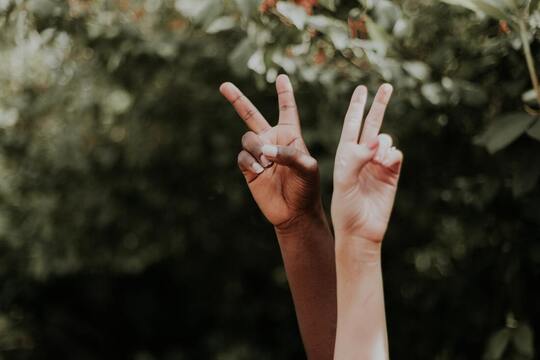 2020 was an incredibly stressful year… Even the most resilient of us probably felt at times overwhelmed, stressed and confused in 2020. Even for those of us who have found silver linings, navigating a year of challenging bushfires, increasing threat of global warming, a global pandemic, working from home, losing work, cancelling social events, and the rising awareness of the impacts of serious social and racial injustice in Australia and the world -take a toll. A toll which we inevitably feel in the body – headaches, stomach aches, tight shoulders, clenched jaws, fatigue. I certainly felt this toll in late December, and have had a quiet break slowly reconnecting with my body and my practice. I am choosing to describe my current practice as compassionate movement. By developing a habit of compassionate movement, we can learn to embrace compassion in a way that it is felt in individual cells in the body, infused throughout our body through the tissues, muscles, bones, organs and fascia. Think of it like steeping in compassion to flavour our lives, in the way a peppermint tea bag might flavour a cup of water. So often, movement practices are seen as a way to “develop” our body, to change it in some way. Slower and mindful practices are seen often as lesser. Embodied compassion is a way of knowing and accepting ourselves as we are, with an awareness that we are all human with a variety of strength, flaws and growth points. We often mistakenly believe that if we stop being critical or hard on ourselves we will become lazy, or lose our motivation. We know though that if we wanted to motivate a child, or our friend, we would be kind, encouraging, honest and supportive. Embodied compassion is not just knowing we should be our own best friend, but living this truth. Benefits of embodying compassion include: •Greater acceptance of our bodies •Greater choices in our actions •Ease of movement •Increased sense of trust in our body •Greater resilience •Increased immune function •Tap into our inner wisdom So, here's to a compassionate new year! When counselling, I often use a ‘bucket model’ to describe self-care. It goes something like this. We all have a bucket with holes, and these holes mean that we get depleted of our life force as energy leaks through these holes. My holes look like working, taking care of my children, aging parents, and a few others. We all have these leaks; they are kind of unavoidable. The nature of the challenges will change as life changes and some leaks are systemic. I recognise that as a white person with employment, I don't have the leaks associated with poverty or racism that others may do, but I do have the leaks associated with caring for someone with a disability etc. The last 12 months in particular have been difficult for many of us. The many fire danger days here in the hills over summer, with temperatures in the 40s, bushfires action plans enacted and fires through the state, created a big hole in our buckets to start the year. And then a global pandemic came... These leaks lead to a range of responses in the central nervous system. When we are depleted, we can get easily emotionally overwhelmed. It can be hard to regulate emotions, we might get teary or irritable or confused. Perhaps we take out our frustrations by being short with the people around us. Or we might feel drained and have trouble concentrating etc. And of course, we should plug these holes where we can. It is important to do an audit from time to time. For me time spent by children clearing up will plug some of my holes of living in a messy house…. But plugging holes is not enough -because life is stressful. There will always be car repairs, or broken fridges, or sick children or too much work. Or something else unexpected. So, as well as plugging the holes we need to continuously top up our bucket, replenish ourselves, to ensure we don't run on empty. The things that top us up are as varied as our leaks. Walks in nature, time with friends, laughing, caring for others are all examples. Many yoga and mindfulness practices are helpful bucket toppers. The key to these energy bucket toppers is to make them intentional. Netflix binging leaves me with a hangover in the same way drinking might. It is never an activity that really tops me up, and can instead leave a bigger hole in that bucket, and usually this is because it is unintentional - just one more episode, rather than say a decision to watch a favourite movie because it fills me with delight. Activities that provide genuine nourishment that we do intentionally are all acts of self-care. Self Care September is a series of “Calls to Action”, a range of reflective, mindfulness, compassionate and yogic based exercises to experiment with to develop a daily habit of self-care. This Self Care September, the call to action is to formalise self-care in your life, a little every day for 30 days. You are free to pick and choose actions as you wish, and to practice as often or as little as suits you. The original self-care September eBook had 30 different daily practices to play around with, drawing LARGELY from yoga and mindfulness and self-compassion practices, and you can utilise these practices or you may like just to focus on one practice and dive in deeply. Join me to explore intentional acts of self-care, in order to nourish not only ourselves, but society collectively. So, I'm curious- What are your best bucket toppers? We have continued to explore the 8 limbs of yoga in our classes this term. I prefer to think of them as spokes of a wheel, as together, they lead us to an integrated whole. In each class I teach, the spokes are present to support us to explore new territory of our bodies and minds and to develop a smooth relationship with ourselves, which can lead to ease and wellbeing. However much of a class is taken up with three parts of the yoga wheel. The Yoga Sutra, in the end of the chapter on embodiment, braids together the three practices of asana, pranayama and pratyahara. Each balances the other, and when threaded together create a stronger support for each other. Asana is posture, and we are advised to be steady and ease-ful in our posture Pranayama is breath awareness, and we are encouraged to develop a smooth and steady breath and to be mindful of the inhalation, exhalation and pauses between. Pratyahara is the blossoming of concentration as our senses are drawn towards a singular object and distractions are minimised. Today in our morning class we did a simple experiment. While sitting, we lifted one leg and open and closed the knee. On the other side, we did the same physical movement, but at the same time we added a breath awareness, we inhaled to straighten the leg, and exhaled to close. When we observed the effects of this practice, many could feel a distinct difference between the two legs- some of us even needed to re-do the first side with the breath awareness to feel an evenness in the knees. So what was going on? The same movement, but with breath awareness and co-ordination drew our attention deeper – we noticed less boredom and wandering of the mind- better concentration and focus. Asana- pranayama-pratyahara. The key threads of yoga practice And this reflects how I weave my classes. We practice movement co-ordinated with breath awareness, of the inhale, exhale and pauses, and this draws out attention inward. Our senses are then less distracted by external and internal distractions and our concentration and focus improves. Try the experiment yourself and let me know what you notice.
|

